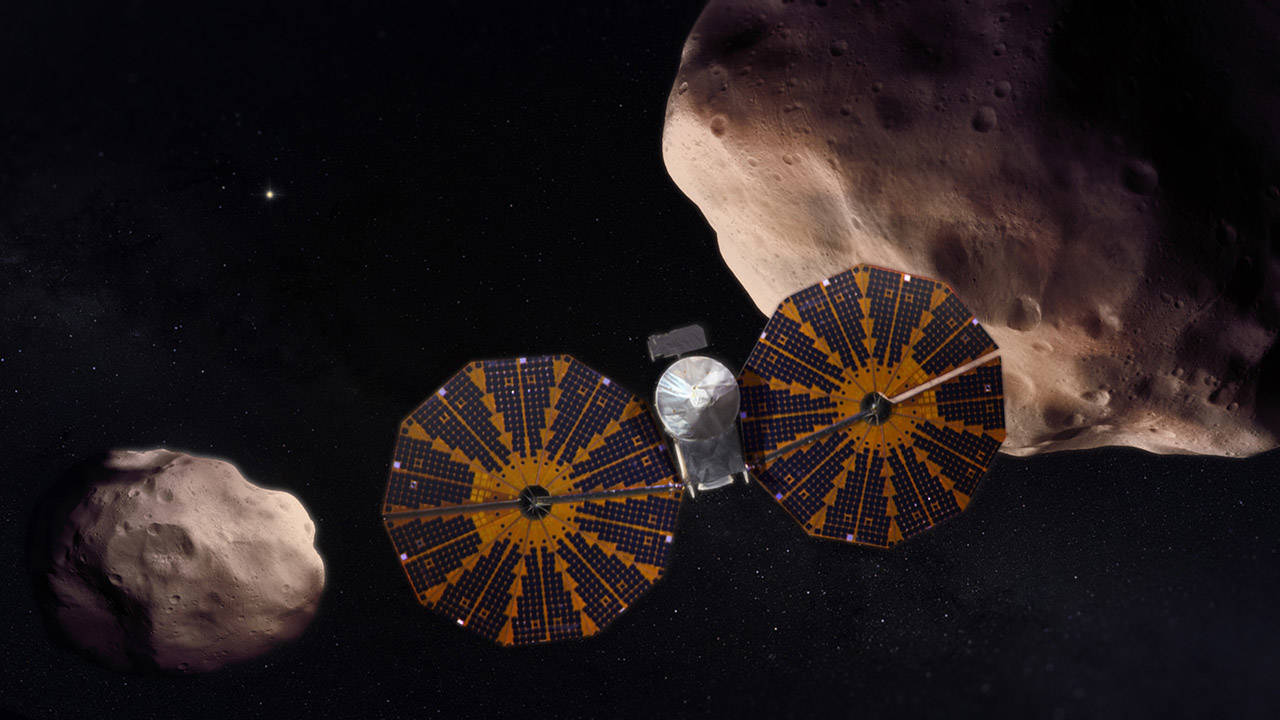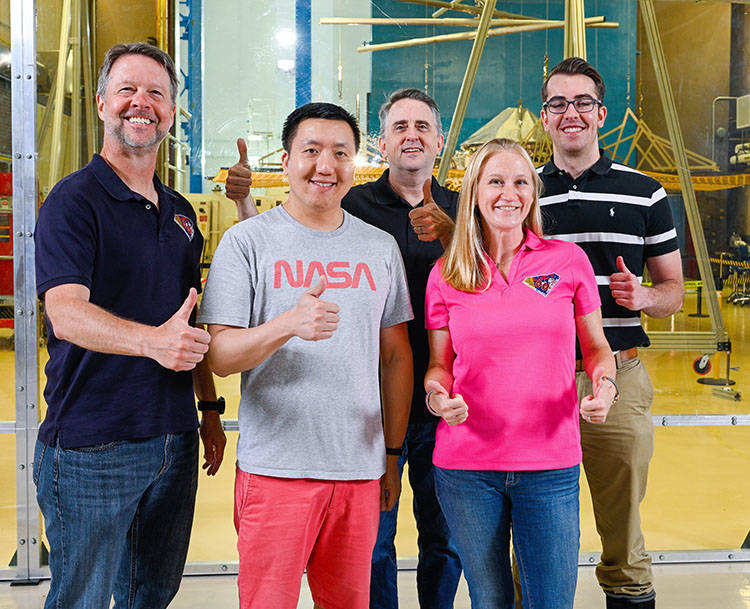General Dynamics Mission Systems provided ground systems management, concept of operations development, systems engineering support and communications transponders for the Lucy mission. (Image Credit: NASA)
Like a time capsule containing the beginnings of our solar system, the Jupiter Trojan asteroids offer us a glimpse at the way things were more than 4 billion years ago.
On Saturday, Oct. 16, NASA launched Lucy, the first mission to explore eight different Trojan asteroids. During its 12-year journey, Lucy will visit these asteroids in two clusters, one group leading ahead of Jupiter in its orbit around the sun, the other trailing behind. In total, Lucy will explore seven Trojan asteroids and one main belt asteroid.
Our Role In The Lucy Mission
General Dynamics Mission Systems teams in Seabrook, Maryland, and Scottsdale, Arizona, were selected to provide pre-launch, mission-critical services. Prior to launch, the Seabrook team provided ground systems management, concept of operations development and systems engineering support for the Lucy mission.
General Dynamics engineering support team in front of the Lucy spacecraft. From left to right: Fran Wasiak, Josh Zhou, Mark Woodard, Keri Siegel and Tim Walsh.
Responsibilities included assuring the entire ground system – from the NASA Deep Space Network through to the Science Operations Center – was ready for launch and operations as demonstrated through ground readiness tests and flight team rehearsals.
The team prepared the Mission, Navigation and Science Operation Centers for their cybersecurity Authorizations to Operate (ATO). They also provided systems engineering support which included on-site test support for propulsion system testing.
In addition to the efforts from the Seabrook team, General Dynamics Scottsdale team provided two Small Deep Space Transponders (SDST) which offer a key communications link between Lucy and Earth.
Fran Wasiak, General Dynamics ground systems manager and concept of operations lead engineer, received a NASA Exceptional Public Achievement Medal in 2020 for his work on the Lucy mission. Tim Walsh, propellant subsystem engineer, received the Lucy Rising Star Peer Award for his work on this groundbreaking program.
General Dynamics has provided engineering services for NASA missions at the Goddard Space Flight Center for decades. Other current missions include the Mars Atmosphere and Volatile Evolution (MAVEN) and Origin, Spectral Interpretation, Resource Identification, Security, Regolith Explorer (OSIRIS-REx) spacecraft. Upcoming missions include the Mars Sample Return Capture Contain & Return System scheduled to be launched later this decade.
More on the Lucy Mission
The Lucy mission takes its name from our fossilized human ancestor, called Lucy by her discoverers, whose skeleton has provided unique insights into humanity’s evolutions. Likewise, the Lucy mission will revolutionize our knowledge of planetary origins and the formation of our solar system.
During the mission, Lucy’s complex path will take it to both clusters of Trojan asteroids and give scientists the first close-up view of all three major types of bodies in the swarms – C-, P- and D-types. The dark red P- and D-type Trojans resemble those found in the Kuiper Belt of icy bodies extending beyond the orbit of Neptune. The C-types are found mostly in the outer parts of the main belt of asteroids between Mars and Jupiter.
According to NASA, “No other space mission in history has been launched to as many different destinations in independent orbits around the sun. Lucy has the potential to show us, for the first time, the diversity of the primordial bodies that built the planets."






